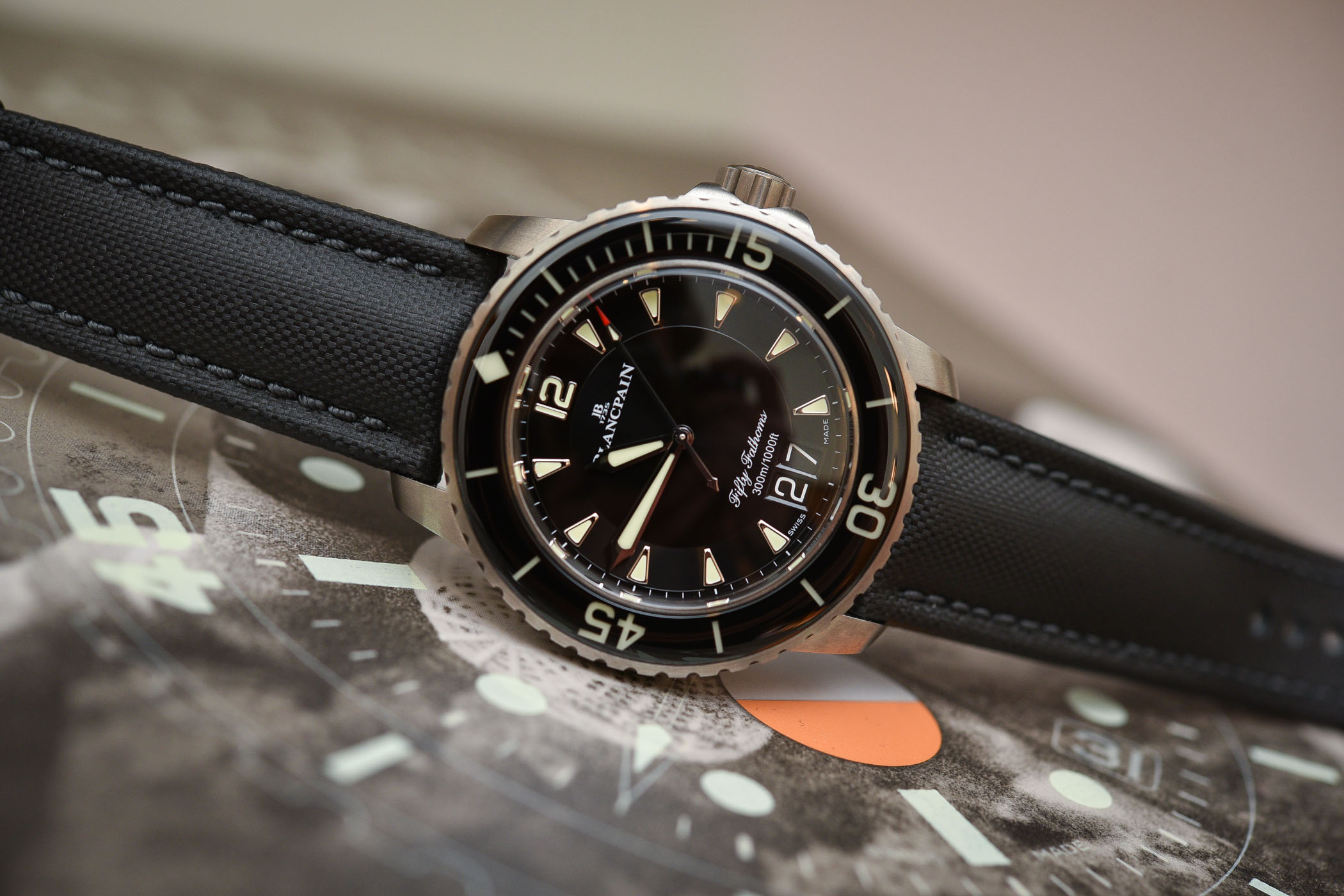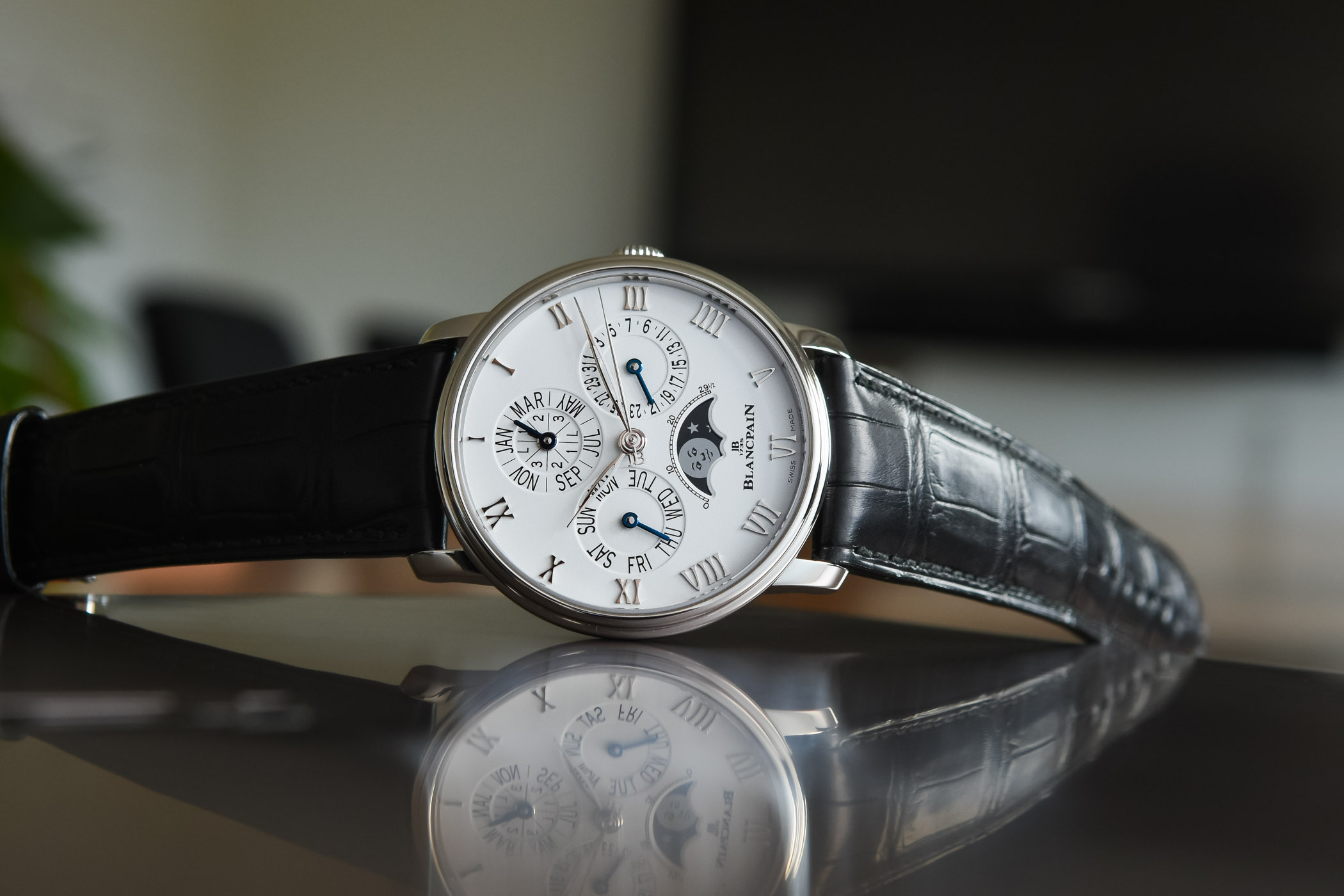Blancpain
Swiss luxury watch manufacturer

Blancpain is the oldest current watchmaker in the world, founded in 1735 by Jehan-Jacques Blancpain in Villeret, Switzerland. Now headquartered in Paudex/Le Brassus, Switzerland, it's also among the most prestigious watch brands in the world. Jehan-Jacques set up his first workshop on the upper floor of his house, but it was his grandson, Frédéric-Louis Blancpain, who in 1815 overhauled production with modern techniques, allowing the once low-volume craft workshop to push serial production. He also introduced a major advancement in horology, replacing the crown-wheel mechanism with a cylinder escapement. Industrialization took hold in the late 19th century and Blancpain built a large factory using water power from the River Suze to generate electricity and again modernized production methods. As many watchmakers in Villeret were shutting down due to modern production and competition, Blancpain endured with unique, sophisticated and highly finished traditional timepieces in a state-of-the-art facility. The company has been a subsidiary of the Swatch Group since 1992 and is among their top brands.
When Jean-Jacques Fiechter (nephew of then CEO Betty Fiechter) joined the company in 1950, he soon developed one of the most significant watches of the 20th century, the Fifty Fathoms in 1953. This was the world’s first modern diving watch built in collaboration with French combat divers (commando frogmen unit of the French Navy). It was named after its depth rating, fifty fathoms (a British measurement equaling 300 feet) and is among the brand’s most popular line today. Challenged by a patent held by Rolex for a screw-down crown, they developed a dual-gasket crown system to achieve the necessary depth rating. At 42mm in diameter, it was a massive piece at the time and a 37mm civilian version followed in 1956, the Bathyscaphe. Named after August Piccard’s deep-water diving vessel, Fiechter added a date complication to make it more practical for daily wear. Although initially designed for separate clientele, the two lines eventually merged into one collection.
Blancpain is known for their sophisticated, complicated watches and they embraced this as a strategy to counter the quartz crisis that decimated many brands in the 1980s. This was the strategy wanted by Jean-Claude Biver, who bought the brand with Jacques Piguet in 1982, before selling it to Swatch Group in 1992. A focus on exclusivity with only mechanical watches and grand complications lead to the 1735 Grande Complication in 1991, featuring a tourbillon, minute repeater, perpetual calendar, moon phase and split-seconds chronograph. Limited to 30 pieces, the 1735 demonstrated their prowess and commitment to traditional horology that some feared would be lost in the modern quartz era. The Villeret collection (named after the birthplace of Blancpain) is considered the brand’s most classical line with both simple and complicated watches. Popular features include dials in grand feu enamel and serpentine hands in blued steel for the calendar indication. Tourbillons, minute repeaters, perpetual calendars, moon phase indicators and more are included in the Villeret collection.
Exceptional finishing is an important aspect of haute horlogerie and the brand’s movements, dials and cases are a testament to this. Advancing the concept further is the Métiers d’Art collection, featuring unique engraving, enamelling and other ancestral decorative techniques rarely seen in watchmaking. The collection showcases the pinnacle of artistic excellence with complex dials displaying unique images of Asian culture, a Battle of the Queen Cows, underwater scenes and more. Blancpain even ventured into the world of erotic watches, creating a series of sensual automata minute repeaters in gold (featured on the case backs).
Recent developments include the world’s first self-winding tourbillon and perpetual calendar in 2000 and the first movement with a one-minute flying carousel and 100-hour power reserve in 2008. In just over the last 10 years (2006 – 2018), the brand created 43 new in-house, exclusive and varied calibres or movements, including the Calendrier Chinois Traditionnel, Tourbillon Carrousel, Carrousel Répétition Minutes and Tourbillon Volant Heure Sautante Minute Rétrograde. Blancpain today represents the zenith of innovation, artisanship and artistry in traditional watchmaking.











